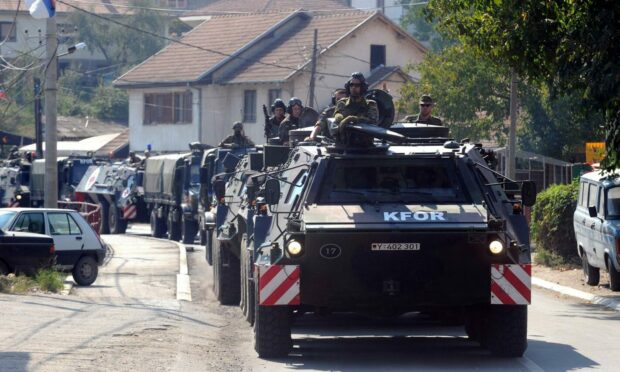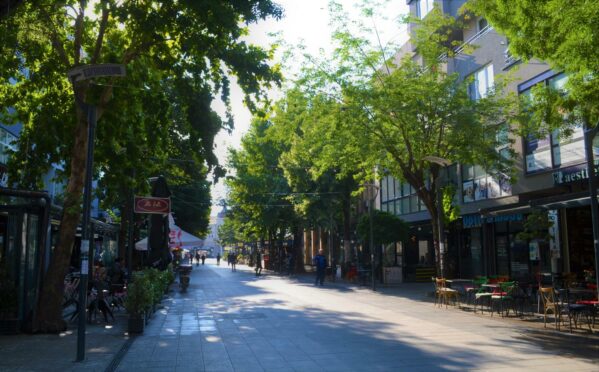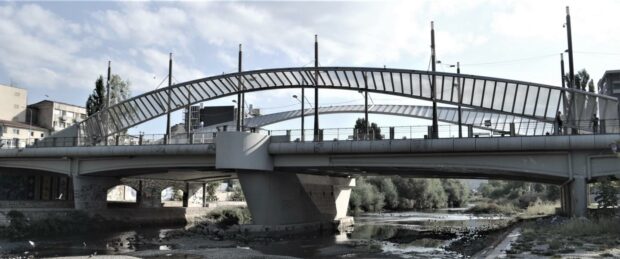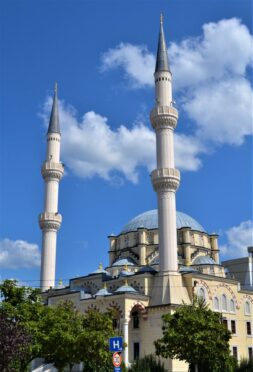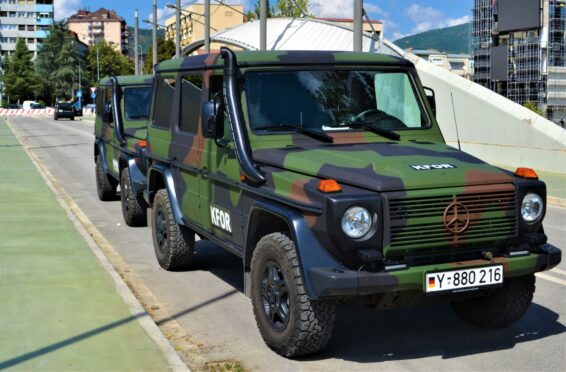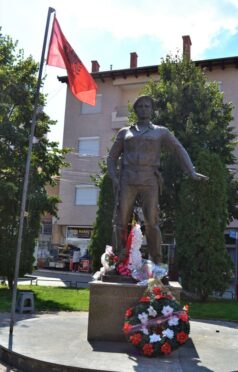In Pristina, I’d already been up and walking around since 6.30am.
Strong black coffee and a slice of freshly made burek got the blood pumping and only cost £1.50. What a way to start the day, for my belly and wallet
Finally leaving my dingy hotel, I walked with my case down a couple of roads that were still being built and on to a main street. A taxi soon stopped, and we agreed a price of £2 to drive me to the out-of-town bus station.
On arrival, oh dear, it looked exactly like I remember it did years ago. Broken and run down. Depressing stuff.
A guy with no shoes went from bin to bin, searching for what he could find. I observed him, he was no threat. However, he then got angry with a specific bin and looked up to the sky where he proceeded to have an angry conversation with God. He wasn’t happy. It only added to the overall desperation of the place.
After waiting for over an hour for a bus, I was told: “No bus to Mitrovica today, come back tomorrow!” That didn’t faze me, for I’ve heard this in numerous countries over the years.
I walked a mile or so with luggage where a series of private minibuses sat. They would take me, but we waited another 45 minutes for the 14-seater to fill up before we left. The journey to Mitrovica took less than an hour and cost me £1.
I was proud on arrival in Mitrovica. “I can still do this,” I said to myself.
As arranged, I met the guy I’d hired the apartment from and we walked the short distance to his place. Very central on a tranquil street filled with cafes just a stone’s throw from the main mosque, the apartment was excellent. Fast wifi, super-clean, large kitchen, separate lounge, bathroom, separate bedroom, and all for £22 per night.
While Kosovo as a country has a complicated history, it’s the northern city of Mitrovica that without a doubt is the ongoing symbol of division in this region. The city is sliced in two and divided by a bridge over the River Ilba. The south side is Albanian, Muslim, pro-EU, NATO, US and UK. The north of the city is Serbian, Orthodox, anti-NATO and pro-Russia.
I would be based on the south side, and promised myself I would resist the urge to hop back and forth between the two sides separated by the bridge. I wanted to immerse myself on the south before crossing over and comparing, therefore I spent the first day and a half only on the south side.
Officially, Mitrovica is in Kosovo, yet of course Serbia and the inhabitants in the north of the city do not accept this. Mitrovica, is not just two cities within one, it’s more like two countries within one city.
All Kosovans say that Kosovo is an independent country, while Serbians claim that Kosovo is merely a province and thus still part of Serbia.
The population of Mitrovica is difficult to work out exactly. I’ve seen various figures, but it seems on average the population is around 85,000 with Albanians making up the lion’s share at around 70%. Serbs are the second biggest grouping. Near all of course, live on “their” side of the bridge.
For one and a half days, I walked the south getting reacquainted. UK and US flags, like in Pristina, fly alongside the Kosovan and Albanian flags, while statues of Kosovan heroes from the Balkan wars are situated all over this half of the city.
There may be mosques everywhere, but this is a very laid-back Islam. The Middle East this is not.
The new gleaming mosque stands proud in a centre square, a stone’s throw from the infamous bridge. It was here, a few years back, that I met and befriended a man named Esat who took me to the mosque, and over the coming days answered all my questions about Islam with an open mind.
Since the end of the Balkan wars, Mitrovica has been at the centre of brutal ethnic violence. I am happy to say that the situation is better than even just a few years ago. Yet, sporadic violence can occur and no one can be sure what will happen tomorrow. Therefore, there is still a very alert military presence here.
KFOR is a NATO-led peacekeeping force in Kosovo. They’ve been here since June 12 1999 and soon after arrival, the Serb forces withdrew. Initially 50,000 troops strong, they have reduced their presence significantly as tensions have fallen and the Kosovan police have become better trained. Today, around 3,500 KFOR troops remain in Kosovo.
However, if KFOR do eventually totally withdraw, even with Kosovo’s police now far better trained and equipped than previous, I feel it would leave Kosovo very vulnerable to being “taken back” by Serbia, no doubt with backing from big brother Russia.
I think, and I hope, that KFOR will remain in Kosovo, and especially Mitrovica, indefinitely. The last thing this region needs is a slide back into ethnic violence and another Balkan war.
Over the years, the bridge that divides the two communities in Mitrovica has been blocked by Serbs with everything from rubble and concrete, barricades, to even trees, plants and grass. They did this out of protest, for they detest being classed as part of an independent Kosovo and want nothing to do with it. They remain loyal to Serbia and Belgrade. Never the twain shall meet.
The bridge today is not currently blocked in ways just mentioned, but it’s impossible for anyone to drive over and has concrete blocks surrounding the north side. On the bridge itself, it’s still guarded by KFOR NATO troops.
Can individuals cross it? Yes, they can and do, but always during the day and for business purposes. I was told that the majority of people always make sure they are back on “their” side come nightfall. I was also told that many on both sides do not, and never will, cross over.
Although peaceful during the day, as per last time, I heeded the advice and didn’t go near the bridge come nightfall. Violence, as I have been told, can happen at any moment.
For sure, this is no Israeli/Palestinian divide. There are no walls or watchtowers or razor wire. People from either side can come and go freely to the other. Some do, but many don’t. They feel safer on their side, in their community, in their city, in their country.
The situation in Mitrovica only strengthens my belief that it’s not bridges, or walls and barbed wire that divide people, it’s the walls they create in their own minds that cause the most damage.
The guy who owns the apartment I rented summed up the past, present and the future when it comes to divided Mitrovica. He said: “We all need to move on.”
Simple yet wise words indeed.
I well remember from last time here, when working on my book, that I most definitely preferred the general feeling in the Albanian south of the city, compared to that of over the bridge in the Serb dominated north.
I remember the north being seriously run down. I remember it feeling like a criminal area. I remember it despondent. I remember it feeling untrusting and unwelcoming.
Time to cross the bridge and find out what it feels like in 2021…
I left the laid-back western-supporting south, walked a hundred feet, crossed a bridge, and walked into what felt like Russia.
Mitrovica really is two countries inside one city.
